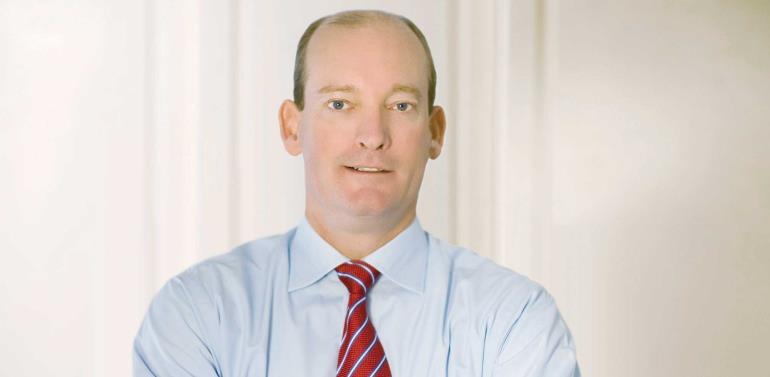Experts
Innovation and Sustainability in a New Energy World

“No region is better placed than the Middle East to take advantage of the potential in greater collaboration,” said Lamar McKay, Chief Executive, Upstream, BP plc while making a presentation at the recently held ADIPEC 2015. Excerpts from his presentation:
We have seen a lot of changes over the years, including a number of price crashes. This current one has to be the fourth big fall I’ve been through in my career, so I think it’s worth looking at this assumption about a new energy world – and asking the question, “What’s different this time around?”
First of all, it’s not really demand that’s different – it’s still going the same way it’s gone for a century – and that’s up. Maybe not quite so fast as the 50-plus percentage growth over the past two decades – but it is still going up enough for us to estimate energy demand will be about a third greater by 2035 on current and expected trends. That’s driven by global population and GDP growth, with almost all of this growth stemming from developing economies, particularly China and India.
And the extra energy needed in 2035 is equivalent to about two-and-a-half times the current total energy production of the Middle East as a whole. So we are not in a new world in terms of demand. But where the picture does look different is on the supply side.
We are in a world where we are consistently finding more energy resources than we consume. Since 1980 the world has consumed around a trillion barrels of oil. But its oil reserves haven’t gone down by that amount – no – they’ve actually gone up by that volume – from 700 billion barrels to 1700 billion. That’s enough to meet over 50 years of future global production. Then we have an environment with Chinese growth softening and supply increasing – the biggest factor being 4.5 million barrels of US tight oil production a day.
Over the past 5 years – because of the shale revolution – almost two-thirds of the increase in global supplies of oil and gas has been down to the US. US tight oil may be only 5 per cent of the global oil market, but the oversupply it prompted was the key factor in driving the collapse in prices last year. So here we are in something of a new world.
Another significant change has been building for some time and that is the rising concern globally about carbon emissions and climate change. This growing sense of urgency about emissions may well translate into policies with long run implications for all fossil fuels.
In BP we see this new world as one in which prices will eventually recover, but this might take some time and prices are likely to remain volatile. That means being in good shape as businesses and as an industry to provide value at the bottom of the cycle as well as the top. With that in mind the next question is, “What does this new world really mean for those of us in International Oil Companies?”
First of all it means a big process of rebalancing, which is already well underway. Capital discipline is key to that. Across the supermajors, something like $80 billion of major projects this year have been cancelled or deferred – double that in 2013. Capex is down over $22 billion in 2015. And that combination of course has consequences for people’s jobs across the industry, as we make some difficult choices.
It is a tough time. But we are a resilient industry and a flexible one. Each company is making their own choices about where their own particular point of balance should be. For us in BP we are looking hard at a number of factors at our geographic spread of assets, at our portfolio of asset types, and at our distinctive areas of strength.
We’re very focused on capital efficiency, and looking at how we can do things differently – collaborating where we can; standardizing equipment and processes where they can bring benefits without compromising safety.
Looking around the globe, every company has its heartlands – and one of those for us is right here in the Middle East. We have a long history here and we’re very proud of that – it’s where we began as a company over a hundred years ago. We have strong roots and strong relationships here, and those are really important for us. In terms of our portfolio of assets, we look for a balance between conventionals and unconventionals; between gas and oil; and between operated and non-operated activities; and between operations that are very responsive to oil price movements and those that are less exposed – such as long term gas agreements and some PSAs.
-

 Alamaliktistaad Magazines2 months ago
Alamaliktistaad Magazines2 months agoAlam Al Iktisaad – September 2025 Edition
-

 Magazines2 months ago
Magazines2 months agoOER – September 2025 Issue
-

 News2 months ago
News2 months agoKitchenomiKs Secures Investment of US$3.2M Led by Jasoor Ventures
-

 News2 months ago
News2 months agoCent Capital, AI Finance App by ex-AWS Strategist ‘The Beast of Bay Area,’ Launches to End Financial Anxiety, Hits $1M AUM
-

 News2 months ago
News2 months agoOman Inaugurates ‘Hadatha’ – Its All-New Cybersecurity Center
-

 Banking & Finance2 months ago
Banking & Finance2 months agoOman Arab Bank Highlights Its Ongoing Strategic Initiatives and Future Plans
-

 News2 months ago
News2 months agoIEA Expects Global Oil Market to Remain Oversupplied in 2026
-

 Energy2 months ago
Energy2 months agoWLGA Middle East LPG Summit & Expo 2025 to be held at OCEC on November 10 and 11































You must be logged in to post a comment Login